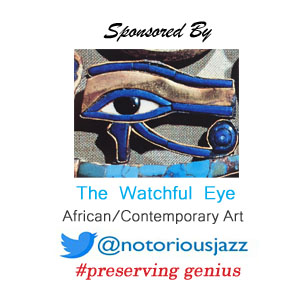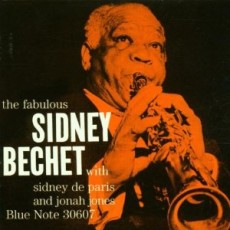
Daily Dose Of Jazz…
Sidney Bechet was born on May 14, 1897 in New Orleans, Louisiana to a wealthy Creole family. At age six he picked up his brother’s clarinet, learned to play by on his own, eventually playing at a family birthday party exhibited his new talent. Later he would study with renowned Creole clarinetists Lorenzo Tio, Big Eye Louis Nelson and George Baquet. He would be found improvising jazz in many New Orleans ensembles led by John Robichaux, Bunk Johnson and King Oliver.
By the time he was 17 Bechet was touring as far north as Chicago and two years later landed in New York playing with Marion Cook’s Syncopated Orchestra. This led him to Europe and the Royal Philharmonic Hall where he attracted attention with his playing. It was in London that Sidney found the straight soprano and quickly developed a style different from his warm clarinet.
Sidney became one of the first important soloists in jazz, eclipsing Louis Armstrong into the studio by several months, and was possibly the first notable jazz saxophonist. His forceful delivery and well-constructed improvisations characterized his distinctive and wide vibrato playing although his lively and unpredictable temperament did not gain him wide acclaim until well into the late forties.
Returning to New York in 1922 he began recording songs like “Wild Cat Blues” and “Kansas City Man’s Blues” with sessions led by pianist and songwriter Clarence Williams. Over the next three decades Bechet continued to record and tour although his success was intermittent. He relocated to France in 1950, got married and shortly before his death dictated his poetic autobiography “Treat It Gentle”. Sidney Bechet, clarinetist, saxophonist and composer died in Garches, France of lung cancer on May 14, 1959, his 62nd birthday.

Daily Dose Of Jazz…
Paul Lingle was born on December 3, 1902 in Denver, Colorado and began on piano at age six. He first played professionally in the San Francisco area in the 1920s, later becoming a local legend in the Bay area in the Forties. He often accompanied Al Jolson in the late 1920s, including recording for his film soundtracks.
In the 1930s Paul worked mainly on radio, and also played with Al Zohn’s band. He tuned pianos early in the 1940s and worked as a soloist in local San Francisco clubs, accompanying visiting musicians such as Leadbelly and Bunk Johnson.
Lingle moved to Honolulu, Hawaii in 1952, where he played until his death on October 30, 1963. A talented stride pianist that also played ragtime, he released almost no recorded material during his lifetime, doing only one session for Good Time Jazz in 1952. Euphonic Records posthumously released several volumes of private recordings that were critically acclaimed.
More Posts: piano
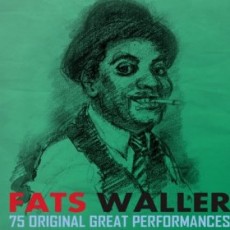
Daily Dose Of Jazz…
Fats Waller was born Thomas Wright Waller on May 21, 1904 in New York City. He started playing the piano when he was six and graduated to the organ in his father’s church four years later. At the age of fourteen he was playing the organ at the Lincoln Theater in Harlem. Within twelve months he had composed his first rag, and recorded his first piano solos “Muscle Shoals Blues” and “Birmingham Blues” in 1922 when he was 18 years old.
The prize pupil, friend and colleague of stride pianist James P. Johnson, he became one of the most popular performers of his era, finding critical and commercial success at home and Europe. Waller was a prolific songwriter, composing hundreds with his closest collaborator Andy Razaf and many became standards such as Honeysuckle Rose, Ain’t Misbehavin’ and Squeeze Me. He recorded profusely for RCA, Victor and EMI and performed and recorded with Gene Austin, Billy Banks, Adelaide Hall, Erskine Tate, Bill Coleman, Al Casey, Rudy Powell and Jack Teagarden among others.
Waller was kidnapped in Chicago leaving a performance in 1926, taken to the Hawthorne Inn, and upon insistence at gunpoint became the surprise guest at Al Capone’s birthday. Rumored he played three nights but when he left he was drunk, tired and thousands of dollars richer. He appeared on one of the first BBC radio broadcasts, influenced many pre-bop pianists such as Count Basie and Erroll Garner and was first to play syncopated jazz compositions were performed on a full sized church organ.
He received a Grammy Lifetime Achievement Award and was inducted into the Grammy Hall of Fame, Gennett Records Walk of Fame, Jazz At Lincoln Center: Nesuhi Ertegun Jazz Hall Of Fame, Big Band and Jazz Hall of Fame and the Songwriters Hall of Fame. Pianist, organist, composer, singer and comedic entertainer Fats Waller, passed away of pneumonia in Kansas City, Missouri on December 15, 1943.
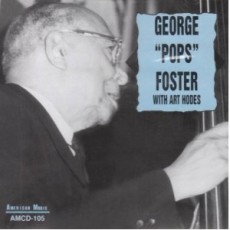
Daily Dose Of Jazz…
Pops Foster was born George Murphy Foster on May 19, 1892 on a plantation near McCall in Ascension Parish outside Baton Rouge, Louisiana. When his family moved to New Orleans he started playing cello at age 10 but then switched to string bass.
Foster was playing professionally by 1907 working with Kid Ory, Jack Carey, Armand Piron, King Oliver and other prominent hot bands of the era. In 1921 he moved to St. Louis and joined the Charlie Creath and Dewey Jackson bands, in which he would be active for much of the decade. He would rejoin Kid Ory in Los Angeles and acquire the nickname “Pops” because he was far older than any of the other players in the band.
By the end of the Roaring Twenties he was back in New York City playing in the bands of Luis Russell and Louis Armstrong till 1940. From that point he would gig with Sidney Bechet, Art Hodes and other various New York bands along with regular broadcasts on the national This Is Jazz radio program.
He toured widely during this period throughout Europe and the United States and was well loved in France. He would return to New Orleans and California regularly. Through the 50s and 60s he played with Jimmy Archey, Papa Celestin, Earl Hines and the New Orleans All-Stars. Bassist Pops Foster, who also played tuba and trumpet, passed away on October 29, 1969 in San Francisco, California. His autobiography was published two years later.
More Posts: bass
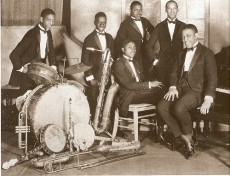
Daily Dose Of Jazz…
Charlie Irvis was born May 6, 1899 in New York City. He first played trombone professionally with Bubber Miley in his youth and then with blues singer Lucille Hegamin in the “Blue Flame Syncopators” from 1920 to 1921. Following this stint, Charlie played with Willie “The Lion” Smith and with Duke Ellington’s Washingtonians and later with his orchestra from 1924 to 1926. During the years 1923 to 1927 he also recorded occasionally with Clarence Williams.
Irvis, along with friends Miley and Tricky Sam Nanton contributed to the development of “jungle sounds” or “growl effects” in trombone playing. After leaving Ellington’s band, for the rest of the decade and into the early 1930s he recorded with Fats Waller, played with Charlie Johnson and Jelly Roll Morton. Some of his final recordings were in 1931 with Miley again, and shortly thereafter with Elmer Snowden.
After the early 1930s, Charlie Irvis, best known for his work with Duke Ellington’s band, stopped playing and passed away in New York City sometime around 1939 in obscurity. He is pictured 2nd from left in the photograph.
More Posts: trombone


